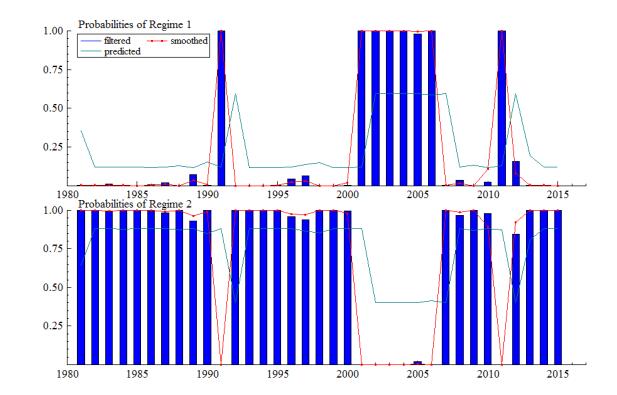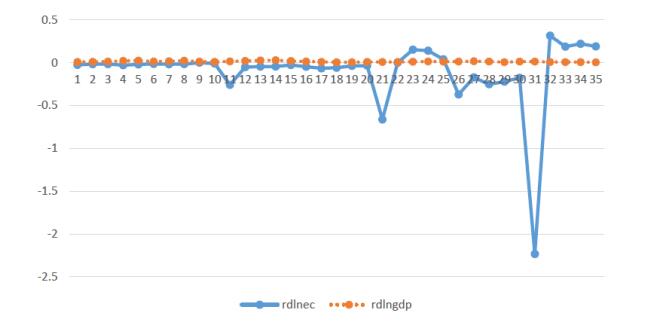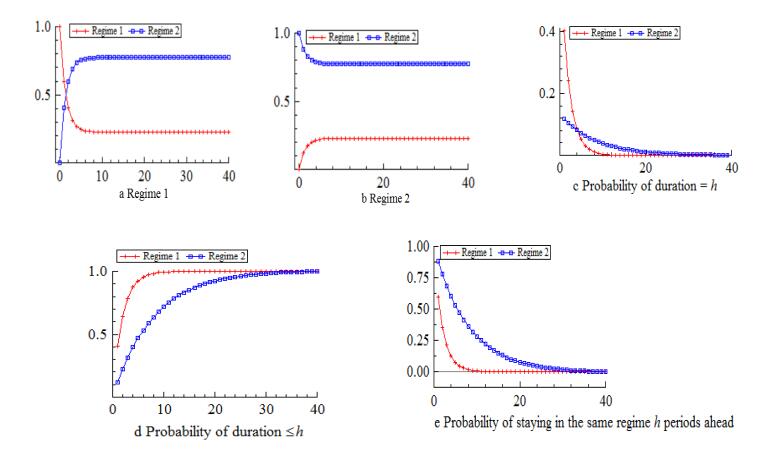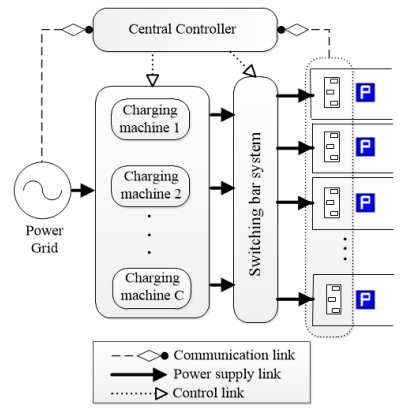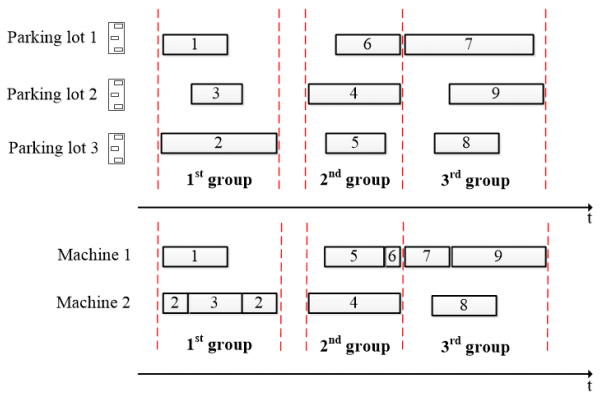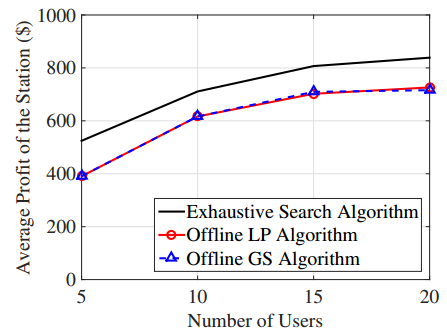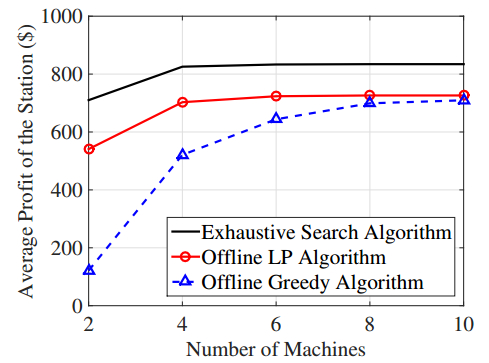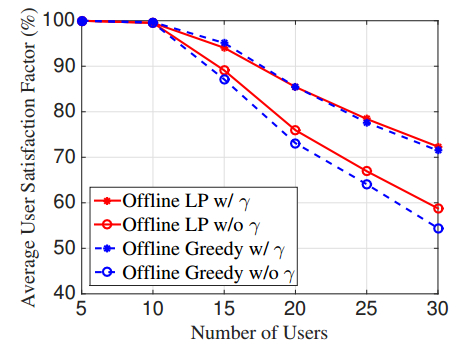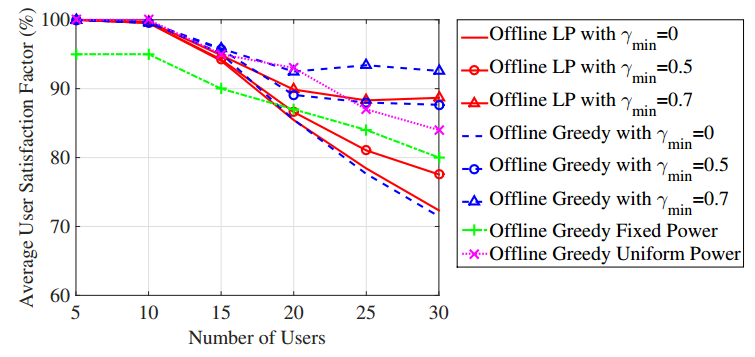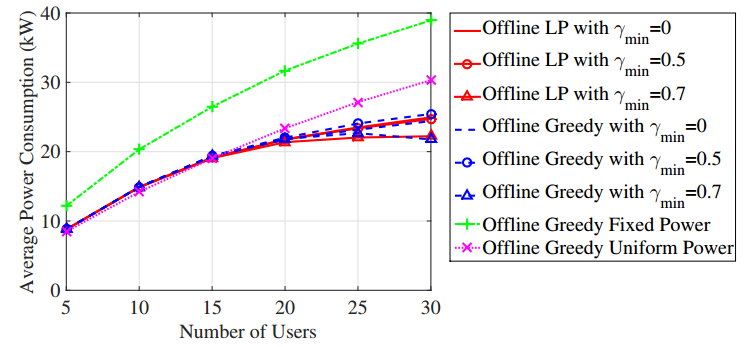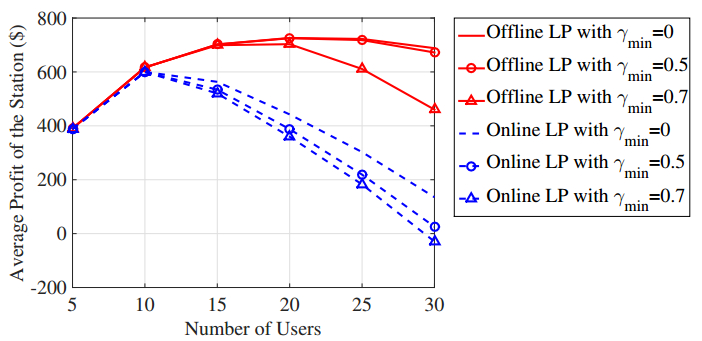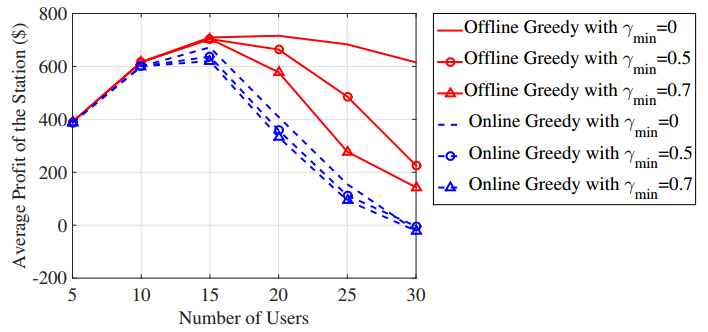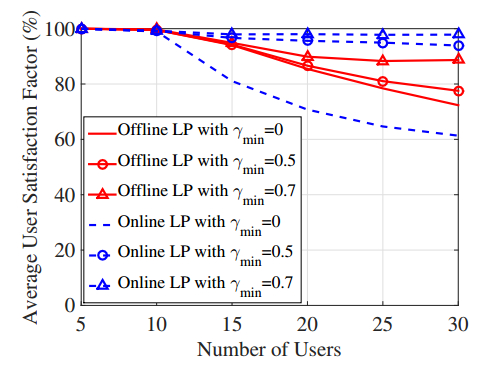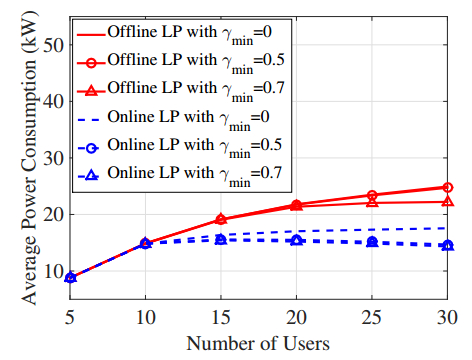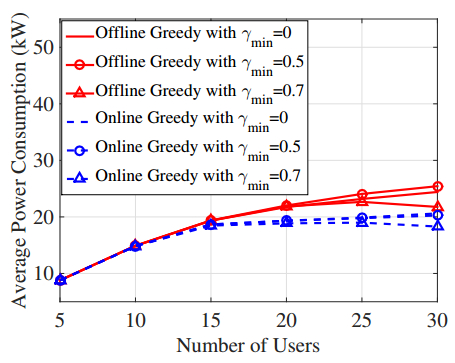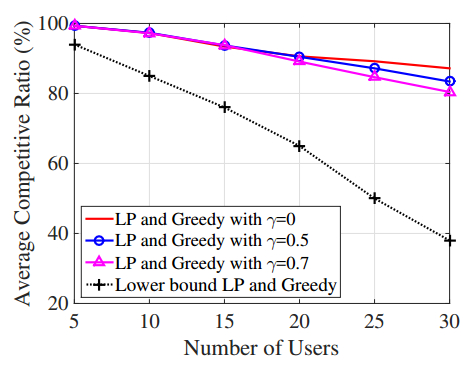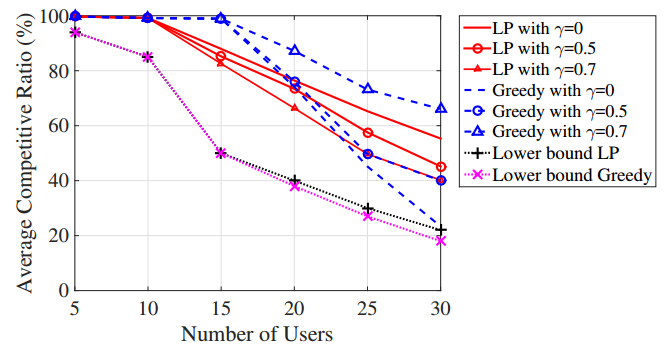As the market of electric vehicles is gaining popularity, large-scale commercialized or privately-operated charging stations are expected to play a key role as a technology enabler. In this paper, we study the problem of charging electric vehicles at stations with limited charging machines and power resources. The purpose of this study is to develop a novel profit maximization framework for station operation in both offline and online charging scenarios, under certain customer satisfaction constraints. The main goal is to maximize the profit obtained by the station owner and provide a satisfactory charging service to the customers. The framework includes not only the vehicle scheduling and charging power control, but also the managing of user satisfaction factors, which are defined as the percentages of finished charging targets. The profit maximization problem is proved to be NPcomplete in both scenarios (NP refers to “nondeterministic polynomial time”), for which two-stage charging strategies are proposed to obtain efficient suboptimal solutions. Competitive analysis is also provided to analyze the performance of the proposed online two-stage charging algorithm against the offline counterpart under non-congested and congested charging scenarios. Finally, the simulation results show that the proposed two-stage charging strategies achieve performance close to that with exhaustive search. Also, the proposed algorithms provide remarkable performance gains compared to the other conventional charging strategies with respect to not only the unified profit, but also other practical interests, such as the computational time, the user satisfaction factor, the power consumption, and the competitive ratio.
1.
Introduction
As its economic development enters a new normal over recent years, China has witnessed a sharp drop in the intensity of its energy consumption. However, the total energy consumption remains at a high level, and structural optimization remains a long and difficult task. According to accounting, its energy consumption in 2016 totaled 4.36 billion tons of standard coal, up by 1.4% over 2015.1 The consumption of coal accounts for 62.0% of the total energy consumption, while the consumption of clean energy resources such as hydropower, wind power, nuclear power and natural gas, accounts for only 19.7%. Besides, to meet the needs of social development, energy demand is expected to continue growing. However, the total energy resources of China takes up only 10% of that worldwide, while its unit GDP energy consumption is 1.9 times the world level, with its energy efficiency far behind developed countries.2
1 Ministry of Environmental Protection of P. R. China, China Environmental Status Bulletin 2016. May 31, 2017.
2 Nuer Baikeli. The "13th Five-Year Plan" for Energy Development. Beijing: China Electric Power Press, 2017.
If we continue to increase the use of energy in a large amount, the problem of energy tension will become increasingly outstanding, and certainly will restrict the healthy and stable development of the economy. In addition, environmental problems caused by extensive energy consumption patterns are also emerging one after another, and the trend of increased pollution of the atmosphere, water and soil has not been fundamentally deterred. All those signs of danger show that China's energy consumption has become increasingly problematic and needs to be revolutionized. Under the new normal economic development backgroud, the bear capacity of energy resources and environment has reached or approximated the ceiling. The room for energy resources and ecological environment will steadily shrink, while popular call for fresh air, clean drinking water and beautiful environment will become more and more intense.
Therefore, nature's law must be respected and followed and the basic national policy of resource conservation and environmental protection must be upheld to promote a new green low-carbon cycle of development. Energy is an important basic resource for social and economic development, and its sustainable development is an important link in the sustainable development of the Chinese society and economy. The relationship between energy consumption and economic growth has been a topic of interest to economists and policymakers, but often with diverging views on which is the cause and which is the effect.
2.
Literature review
Quantitative research on the relationship between energy consumption and economic growth attracted the attention of the international community in the 1970s. So far, much literature has been yield, from the research of scholars from various countries using different data and statistical methods.
Yu and Hwang (1984) conducted a pioneering research for western countries. Based on the annual data of the United States in the period 1947–1979, they found that there was no causal relationship between energy consumption and GNP growth; Karanfil (2007), Pao and Tsai (2011) examined the relationship between GDP and energy consumption with the co-integration test and Granger causality test; Siebert (1982) pointed out that the economic growth would be inhibited when it exceeded the environmental carrying capacity and the ecological environment would be pushed to the verge of collapse; Yu and Choi (1985) studied the relationship between economic growth and energy consumption in different economies, with the standard Granger test. They concluded that there was no causal relationship between energy consumption and economic growth in the United States, Poland and the United Kingdom, while the GNP of Korea had a one-way causal relationship with energy consumption.
For some Asian countries and regions, the conclusions also tended to diverge. Hwang and Gum (1992) studied the relationship between economic growth and energy consumption in Chinese Taiwan and found that there was a two-way causal relationship; Chiou-Wei (2006) examined the relationship between GDP and energy consumption by the data of philippines in the period 1954 to 2006, and concluded that economic growth was one-way Granger cause for its energy consumption. Zhao Jinwen et al. (2007) and Zhang Youzhi et al. (2016) studied the intrinsic structural dependence of Chinese economic growth on energy consumption with the STR model and found that economic growth had a relatively stable influence on energy consumption; Yang Fangyuan et al. (2017) established a decomposition model of industrial energy consumption using the LMDII decomposition approach, analyzed the changes, the main reasons and the degree of influence of each factor and their characteristics of terminal energy consumption in China's high-energy-consumption industries from 2006 to 2011, and offered policy suggestions; Liang et al. (2014) studied the relationship between energy consumption and economic growth in China from 1953 to 2008 using the Markov Regime Switching Model, and concluded that there was a one-way Granger causality relationship between economic growth and energy consumption for the regime with moderately rapid economic growth and a two-way Granger causality between the two for that with rapid economic growth; Guo Sidai et al. (2012) and Ma Hongwei et al. (2012) examined the relationship between new energy utilization and economic growth in China using Granger causality test and linear regression model, and found that in the short term there was no two-way Granger causality between energy consumption and economic growth, but economic growth was the Granger cause of energy consumption in the long run; Luo Bo et al. (2017) used SPSS software to carry out correlation and regression analysis on China's GDP growth and environmental pollution index, and carried out an empirical test for economic development and environmental governance in resource-rich areas in China of its EKC curve characteristics; Zhang Xiu and Wang Guangfeng (2017) drew on the VAR model and generalized pulse analysis for analyzing the dynamic relationship between energy consumption and economic growth in Hebei Province and concluded that carbon emissions and economic growth assumed a relationship of inverted U-shaped EKC curve.
As can be seen above, the causal relationship between GDP and energy consumption had been studied by many scholars using the VAR model, VECM model, Canonical Correlation model, Granger Causal Relation Test and other methods. The results they obtained were quite different, some found that there was a one-way causal relationship between GDP and energy consumption; others believed that there was no causal relationship between the two; still others concluded that there was a two-way causal relationship between the two. In those studies, the model parameters were assumed to be constant over the sampling period. In other words, the relationship between GDP and energy consumption was believed to be constant, however, in fact, the change of macro policy, the sudden economic crisis and the financial crisis will affect the relationship between GDP and energy consumption. Therefore, those studies are all prone to one common weakness in failing to construct the relationship between energy consumption and economic growth with the linear model and in ignoring the non-linear nature of economic time series. Hamilton once pointed out that after a certain period of time, many economic variables would assume considerable change in serial characteristics. Therefore, sufficient discretion should be exerted in establishing a linear model for economic variables. The innovation of the present study consists in opting for the nonlinear model instead of the traditional linear model for examining the dynamic relationship between economic growth and energy consumption in different regimes. The approach shall be capable of analyzing the relationship between the two with greater accuracy.
3.
Model configuration
3.1. Theoretical model
Since the macroeconomic operation is prone to multiple changes or structural breakpoints in a particular economic cycle, greater deviations might occur in examination of the relationship between GDP and energy consumption using traditional linear models. Therefore, the concept of traditional linear modeling is replaced with Markov Switching Vector Auto-Regression (MS-VAR) Model for studying the relationship between the two in the present study.
The MS-VAR Model was first introduced into econometrics by Goldfeld and Quandt (1973). Afterits proposition by Sims (1990), the vector autoregressive model had seen extensive application in the study of the overall variables. The MS-VAR Model is the result of adding the features of Markov Chain to the vector autoregressive model.
The parameters in the MS-VAR model include constant terms, averages and error terms, all of which change with the regime switching. The model is thus chosen in view of the needs of the present study for studying the dynamic relationship between economic growth and energy consumption under different regimes.
3.2. Model introduction
In the MS-VAR model, the parameters of the VAR model are dependent on the status (st). Assuming that there are s statuses, that is, st∈
{1, 2, ..., s}, yt, the conditional probability density function of the time series, can be defined as :
In the equation, θ stands for the parameter in the VAR model and Yt-1 for the observed value of Sampley t-1.
In each regime, the general form of an MS-VAR can be described as:
In the equation,
v is the intercept term, Ai is the autoregressive coefficient and εt is the white noise vector, satisfying εt~NID(0, ∑(st)).
In a MS-VAR model, (st) is generated by a Markov chain:
In the equation, ρ contains the probability parameter, that is, the regime of period t is just dependent on the regime of period t-1. In addition, the conditional probability distribution of yt is not rely on st-1, that is, pr(yt|Yt-1, st-1) = pr{yt|Yt-1}. In addition, the regime variables are unobservable; they have to be inferred from the observable time series yt. Define pij as the switching probability from Regime 1 to Regime 2, and:
The regime switching probability can be described as an (N * N) matrix denoted with Pij:
There are two methods for estimating the parameters of a MS-VAR model. One is to obtain the maximum likelihood estimate of the model using the Expectation-maximization algorithm (EM algorithm), and the other is to use the Gibbs sampling algorithm for calculating the parameters. In the present study, the EM algorithm is used for deriving the parameter estimates.
3.3. Variable selection and data source
Select the GDP and ten thousand yuan GDP energy consumption (shortend as EC) of China from 1980 to 2015 as the research data, the data comes from China Statistical Yearbook 2016, the original data are shown in the attached table. We chose 1980 as the starting point of the sample interval for two reasons: 1. 1980 was the initial stage of China's reform and opening-up policy; 2. In 1980, China set the policy of solving energy problems: laying equal stress on development and saving, and giving priority to energy conservation.
4.
Empirical research
4.1. Unit root test
In constructing the MS-VAR model, efforts should be made to ensure the stability of the sample data. For the present study, Eviews 8.0 with ADF test method was adopted. From Table 1 and Table 2 it can be seen that neither GDP nor energy consumption is stable series. In order to reduce the fluctuation of data and eliminate the heteroskedasticity of economic time series, the logarithm of GDP and energy consumption was taken for ADF test. Likewise, the series were found to be unstable. So the data were subjected to first-order differential treatment for testing, and the resultant sequences were found to be stable.
4.2. Co-integration test
It can be seen from Table 3 and Table 4 that, under the null hypothesis of no co-integration between the trace test results and the maximum eigenvalue test results, the p value is 0.7696, greater than the significance level of 0.05. Therefore, the null hypothesis stands, that is, there is no co-integration between the two.
4.3. Determination of the optimal order
In this paper, the optimal order of the model was determined with the AIC and SC values. From the optimal lagged differences determined in Table 5, it can be seen that when the lagged difference is 1, the AIC and SC values are -3.823609 and -3.548784. Small difference between the AIC and SC values indicates that the model is the best match. So it was determined that the VAR order of the model shall be 1.
4.4. Determination of the optimal model
The best model for MS-VAR was then determined using the AIC, SC, and LR Linearity values. See Table 6 for details.
This paper determines that the order of the VAR modle was 1, according to the value of AIC and SC. According to AIC and LR test, from Table 6 it can be seen that the MSIAH (2)-VAR (1) modle has the smallest AIC value and SC value, and the LR statistics are most significant. Therefore, we select the MSIAH (2)-VAR (1) modle to study the relationship between economic growth and energy consumption, then the modle will be tested.
4.5. Model test
It can be seen from Table 7 that the LR linear statistics (χ2(9),χ2(11) and Davies) significantly reject the null hypothesis of the model being linear. Next, a dynamic analysis was made of the regimes of the MSIAH (2)-VAR (1) model.
4.6. Model analysis
The probability of regime switching shows the possibility of a shift in the correlation between GDP and energy consumption. It can be seen from Table 8 that, when the current phase belongs to Regime 1, the probability for the next phase to remain so is 0.5965, while that for switching to Regime 2 is 0.4035. When the current phase is in Regime 2, the probability for remaining so in the next period is 0.8824 and that for switching to Regime 1 is 0.1176. The estimates show that none of the regimes is stable because the probabilities for switching are below one. Therefore, the relationship between economic growth and energy consumption has always been unstable.
Drawing on Table 7, Table 9, and Figure 1, the following analysis is then made of the relationship between China's GDP and energy consumption: For GDP, Table 9 shows that the critical value of t-test is 2.035at a 5% significance level; the statistics of the DLNEC's lagged term coefficient passes the test, and the coefficient of the lagged term of energy consumption (DLNEC) is significant in Regime 2 only. In other words, energy consumption was the Granger reason of GDP for the periods of 1980–1990, 1992–2000, 2005, 2007–2010 and 2012–2015, when energy consumption drove economic growth. However, for Regime 1, the DLNEC's lagged term coefficient for 1991, 2001–2004, 2006 and 2011 was not significant. In other words, there was no strong correlation between the two. Specifically, energy consumption had no significant impact on GDP; it wasn't the Granger reason for GDP.
For energy consumption, lagged term coefficient of economic growth (DLNGDP) is significant only in Regime 1. In other words, GDP was the Granger reason for energy consumption in 1989–1991, 1995–1997, 2000–2008 and 2010–2013, and the growth of the economy has promoted the consumption of energy. However, in Regime 2, the lagged term coefficient of DLNGDP in 1980–1988, 1992–1994, 1998–1999, 2009 and 2014–2015 is not significant. There was no strong correlation between GDP and energy consumption.The former had no significant impact on the latter and wasn't the Granger reason for it.
All in all, GDP is the Granger reason for energy consumption, and energy consumption has no significant effect on GDP under Regime 1. Under Regime 2, energy consumption is the Granger reason for GDP, which has no significant influence on energy consumption. Obviously, there is not necessarily a strong correlation between GDP and energy consumption.
Table 10 gives the dynamic correlation coefficient between GDP and energy consumption under different regimes. The correlation coefficient of Regime 1 is 0.2459 while Regime 2 is -0.2278, it shows that the relationship between GDP and energy consumption is different under the different regime system. In Regime 1, there is a weak positive correlation between GDP and energy consumption. The GDP growth has promoted energy consumption increased, which in turn drives GDP growth, but their mutural influence is not high, indicating that there is no strong correlation between the two. In Regime 2, there is a weak negative correlation between GDP and energy consumption, with abnormal "deviations." The main reason is that excessive energy consumption may lead to a series of environmental problems, for example, coal consumption leads to excessive SO2 emissions and acid rain, which incurs large state spending to be controlled, and consequently interferes with GDP growth.
Next, the practical significance of the model is tested, with sustainability as the first item. It can be seen from Table 8 that the self-sustainability probability of Regime 2 reaches 0.8824, much higher than the 0.5965 of Regime 1. As can be seen from Table 11, the average duration of Regime 2 is 8.51, almost four times that of Regime 1, which stands at 2.48. Moreover, it can be from Table 11that the unconditional probability of Regime 2 is 0.7744, while that of Regime 1 is only 0.2256. Therefore, it may be concluded that Regime 2 has greater stability and sustainability than Regime 1.
To put those factors in perspective, the actual economic conditions of China is examined.From 1990 to 1991, China witnessed effective GDP growth, following the gradual and orderly promotion of opening up to the outside world. China joined the World Trade Organization in 2001 and promoted a rapid growth in its GDP. In 2011, China's "12th Five-Year Plan" started its implementation, China accelerated its economic construction and its GDP grew steadily. From 1980 to 2000, China's energy consumption grew at an annual rate of 5.6% to support an annual growth of 9.8% in its national economy.
Combined with the actual situation of the international economy, during the 20 years from 1980 to 1999, the contribution of Chinese economy to the global economic growth was only 3.8% while the contribution of United States was 32.2% in the same period.The contribution of China's economy to the global economy increased sharply to 9.5% in 2000–2007, while the us declined by 17.3% in the same period. China's economy contributed 40.8% to global economic growth in 2008–2014, compared with 18.9% in the United States. As energy consumption grows steadily, so does GDP.
It can be seen from Figure 2 that energy consumption increased with the GDP growth from 1980 to 1989 and 1992 to 2000. From 2000 to 2015, energy consumption assumed an irregular pattern of change, with the steady increase of GDP. The fluctuation from 2010 to 2015 was especially marked. The same trend can be observed in the dynamic relationship between GDP and energy consumption as the regime-switching probability diagram of the model, indicating weakened impact of GDP growth on energy consumption with social development. Over consumption of energy did not necessarily promote economic growth. On the contrary, it could be counterproductive. This shows that energy consumption is gradually decoupled from economic growth.
In short, the actual economic conditions of China and the world coincide with the regime probability diagram of the MSIAH (2)-VAR (1) Model, indicating that the model and the correlation analysis are of significance.
4.7. Forecasts of the model
Figure 3 shows the transition probability of predicting future regime based on historical data. The horizontal axis in Figuer a and Figure b shows the predicted period when the observed value is in a certain regime, the probability of two different types of regime for the future period h; the axis h of Figure c, Figure d, and Figure e represents the time length of a continuous probability, respectively shows that the probality of the duration of each regime system is h, shorten than h, and more than h, this has a certain reference value for the prediction of the relationship between GDP and energy consumption.
5.
Conclusions and policy suggestions
After two-regime system of MS-VAR econometrics analysis, the paper divides the variation features of the changes in the relationship between economic growth and energy consumption by stages. It not only estimates the correlation between GDP and energy consumption under different regimes, but also forecasts the probability and direction of regime switching, as well as the duration of each regime, before arriving at the following conclusions:
First, There is a certain degree of asymmetry between China's GDP growth trend and energy consumption trend, as reflected in different durations and switching probabilities of stages, as well as different durations of different regimes. In addition, the directions of regime-switching assume obvious jumps and asymmetry. This shows that China is still in a period of rapid development, and that its economic growth and energy consumption patterns have not reached a stage of steady development.
Second, under the non-linear model, there is a complex correlation between GDP and energy consumption, and the relationship between the two can be very different under different regimes. In most sample intervals, there is a weak negative correlation in between, but in a few sample intervals, there is a weak positive correlation. This indicates that in the short run, heavy energy consumption leads to GDP growth, which in turn promotes energy consumption. In the long run, massive energy consumption will lead to a series of environmental control needs, and the high costs incurred will adversely affect economic growth.
Thirdly, with the advancement of science and technology and the improvement of energy efficiency, the industrial structure and energy structure have been constantly changing, and the driving force of economic growth has also been transformed, as a result, the demand for energy in the latter half of the "12th Five-Year Plan" has dropped sharply.In the new normal period, the steady growth of GDP has not significantly increased energy consumption, and there is no significant correlation between the two, indicting the energy consumption and economic growth is gradually decoupling, the contribution rate of energy consumption to economic growth is gradually decline.
In light of the above conclusions, efforts must be made to adapt to the profound changes in the political and economic situation and energy supply and demand patterns around the world. The basic national conditions and "weaknesses" of low per capita resources and unreasonable energy structure necessitates promotion of revolution in energy production and consumption patterns and green, low-carbon and smart development, and implementation of ecological and environmentally friendly measures for combatting pollution, to carve out a clean, efficient, safe and sustainable path for energy development so as to support steady economic growth. Specifically, this paper presents the following policy recommendations:
First, promote innovation in energy system and mechanism. Create an open, competitive and orderly market for electricity, oil and gas, increase the degree of openness of import and export of natural gas and improve the trading system in the coal market; improve the energy price mechanism, promote market-oriented prices in competitive sectors and improve the price systems of clean energy such as natural gas and electricity; strengthen energy management, give full play to the role of the market and ensure fair access to power grids and oil and gas pipelines.
Second, promote the optimization of energy structure. Promote the coordinated development of renewable energy resources: comprehensively promote the construction of large-scale hydropower base on the basis of carrying out environmental protection work and resettlement; actively promote the development of wind power and improve the service system for supporting industries; accelerate technological progress and promote the development of the photovoltaic industry; accelerate the development and utilization of biomass energy and vigorously promote the large-scale development of biological natural gas.
Third, build green low-carbon energy consumption patterns. Actively develop clean energy sources such as natural gas, nuclear power and renewable energy, and accelerate the phase-out (transformation) of small coal-fired boilers. Reduce energy consumption and improve energy utilization efficiency in resource exploitation and production.
Fourth, implement more stringent environmental policies. Establish and gradually expand "no coal areas"; speed up the upgrading of industrial fuels, focus on key areas of air pollution prevention and control, formulate stricter emission standards, and increase the use of industrial fuel and natural gas instead of coal. Expand the scope of reduction and substitution in coal consumption and strengthen implementation, resolutely shut down and eliminate backward coal use patterns below the required standards for pollution emissions and energy efficiency.
Fifth, enhance the concept of energy efficiency. The government should step up publicity efforts to engage enterprises, schools and citizens in energy-saving activities by public-welfare advertisements and media campaigns. It should formulate laws and regulations, order enterprises guilty of excessive energy consumption to be transformed in time, and set up energy-saving funds to carry out energy-saving work and offer economic incentives to units exemplary in energy-saving.
Acknowledgments
Research supported by the Program of National Social Science Foundation of China (NO.18BTJ044).
Conflict of interest
We declare that we do not have any commercial or associative interest that represents a conflict of interest in connection with this paper.









 DownLoad:
DownLoad:
